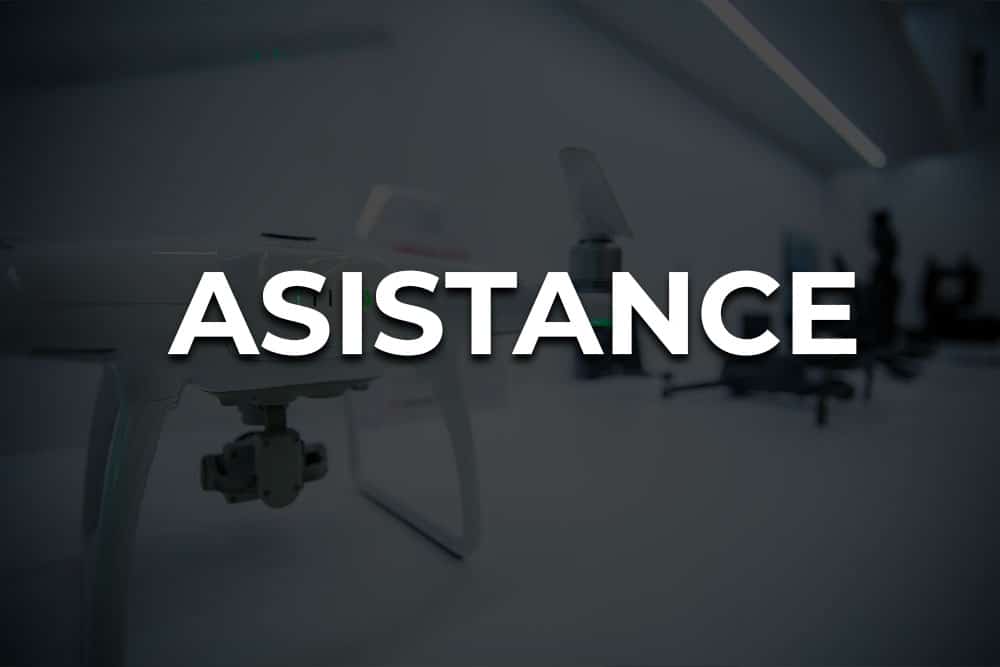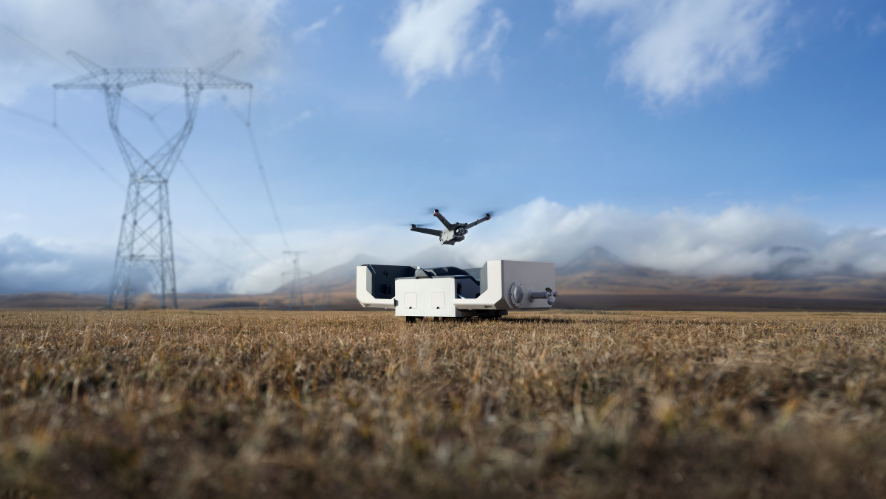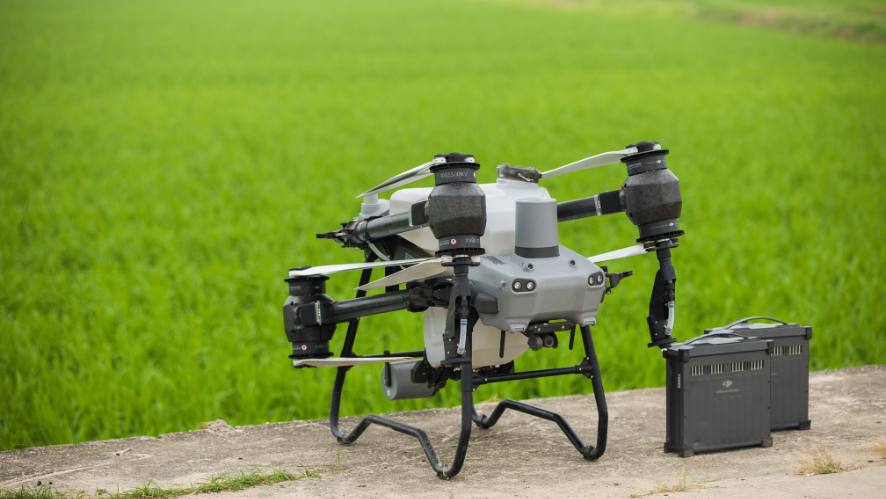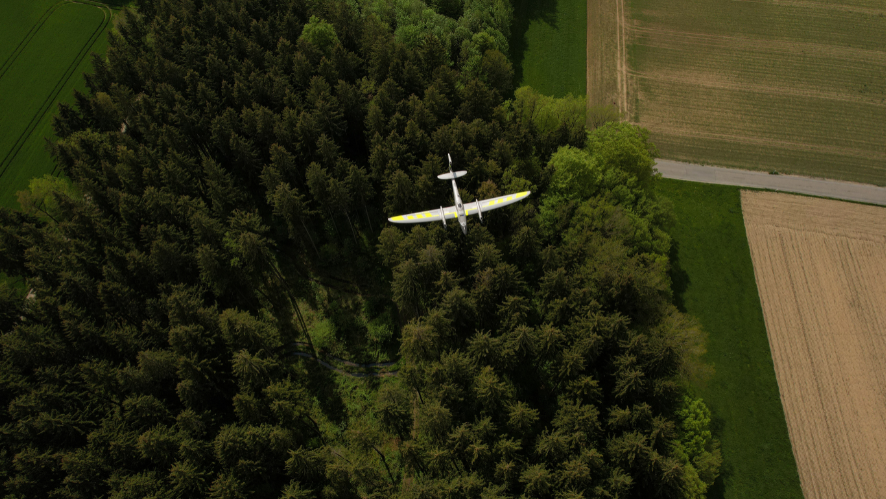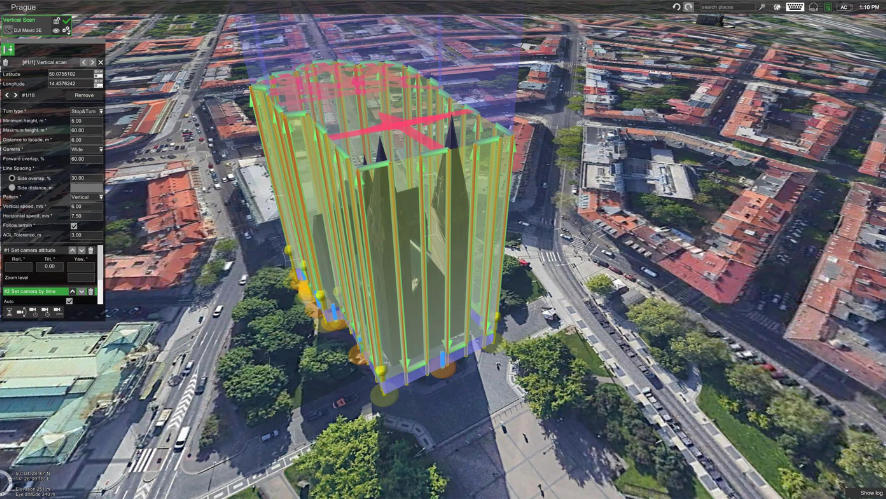DJI FlyCart 30
Dynamic Aerial Delivery.
The future of transportation
The DJI FlyCart 30 marks the beginning of a new era in low altitude transport. This innovative drone combines extraordinary payload capacity, long range, robust signal and high technology. Supports two loading modes: cargo box and empty crane system. This integrated approach breaks away from traditional transportation constraints, allowing a flexible response to various transportation scenarios. Offering more efficient and cost-effective solutions, the DJI FlyCart 30 represents a safe and integrated approach to air transport, overcoming conventional barriers and expanding the possibilities of borderless transportation.

MAIN CHARACTERISTICS
- Maximum payload of 40 kg (with a single battery) and an empty range of 28 km (16 km on a full charge) at a speed of 20 m/s.
- With a dual battery, the drone operates in a variety of conditions, including altitudes of up to 6,000 metres and a temperature range of -20°C to 45°C, withstanding winds of up to 12 metres per second.
- O3 image transmission reaches 20 kilometres, with enhanced 4G image transmission and dual control, accompanied by a single-axis Full HD FPV gimbal camera.
- IP55 protection level and intelligent obstacle avoidance features such as dual radar and dual vision provide enhanced safety.
- The FlyCart 30’s versatile design includes a 70-litre EPP foldable cargo box and a vacuum lift system.
- Endurance in hovering flight (empty weight, with maximum battery capacity) – up to 29 minutes on two batteries
- Stationary flight endurance (max. weight, max. battery capacity) – up to 18 minutes with a 30 kg load and two battery mode
READY TO WORK
It can reach long and short distances quickly and efficiently. With a large payload capacity and a wide range, it can overcome space limitations to successfully accomplish its missions. When operated with a single battery, the FlyCart 30 drone has a maximum payload capacity of 40 kg. With dual batteries, it reaches a maximum range of 28 km without charge and 16 km with full charge, reaching a maximum speed of 20 m/s with its carbon fiber propellers. More information in this article by Sapo.
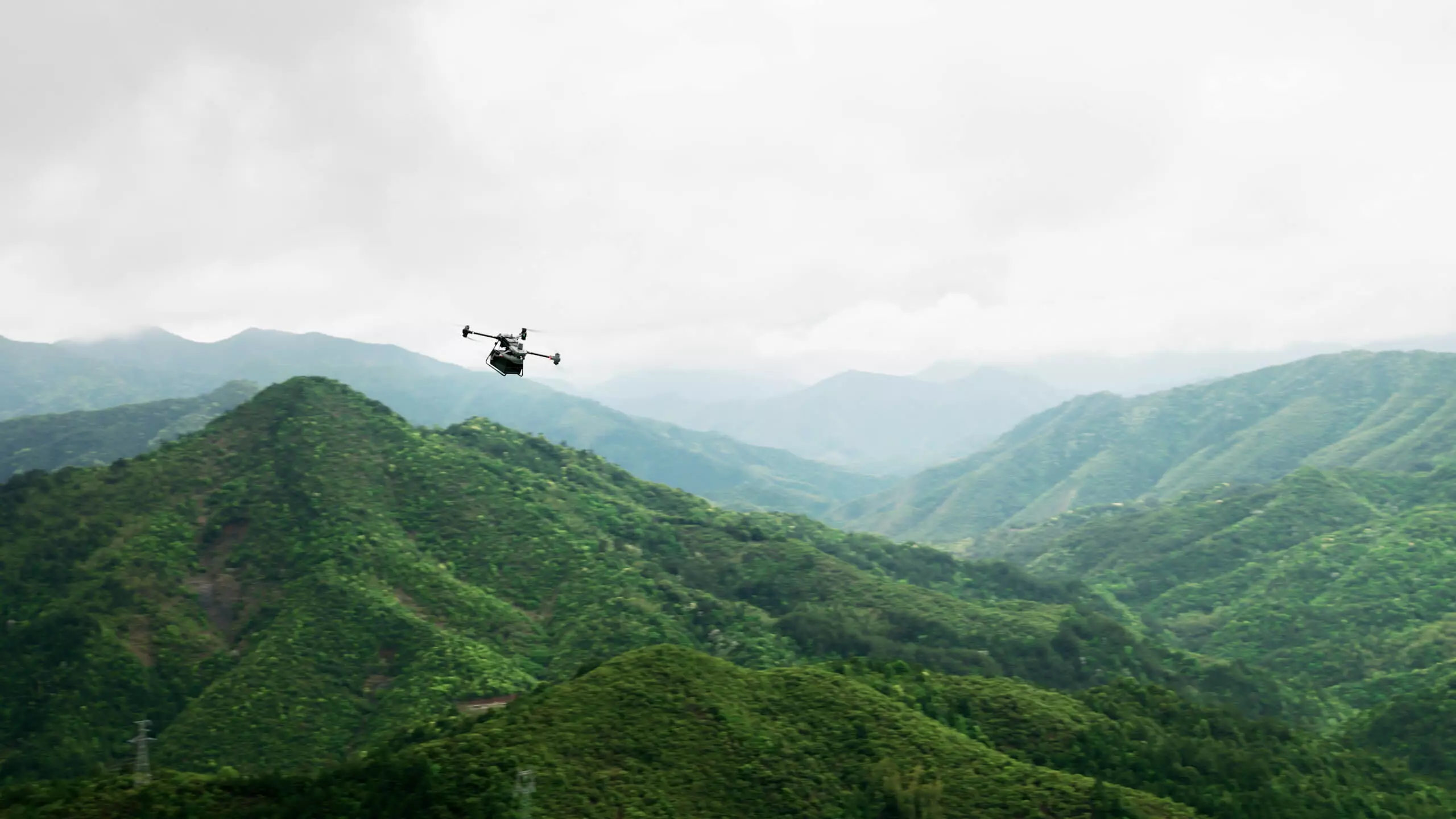
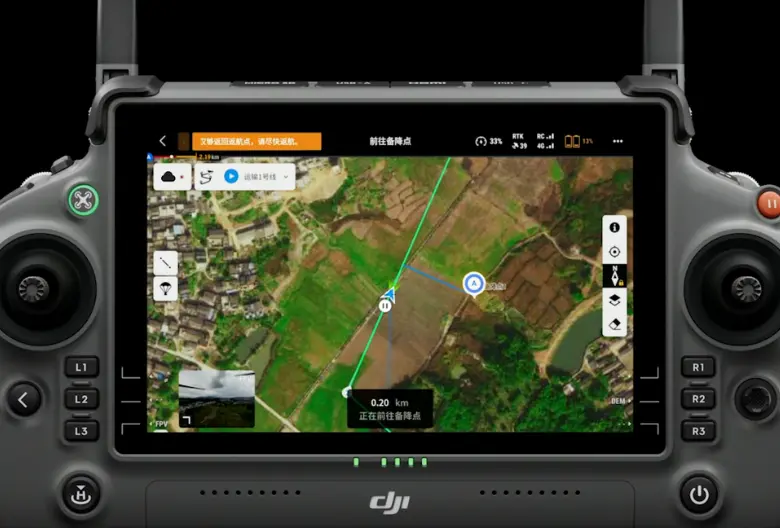
CHANGEOVER POINT AND EMERGENCY LANDING CONFIGURATION
By supporting multiple backup point configuration, the drone allows for emergency backup operations in abnormal situations to enhance operational safety.
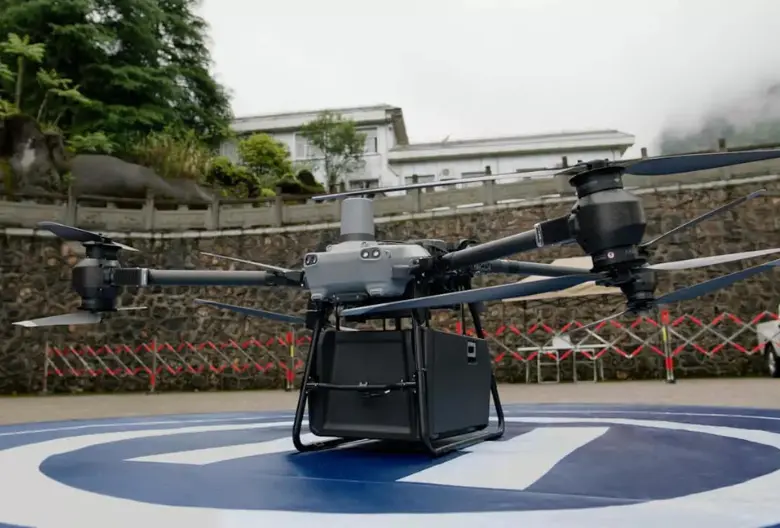
PROTECTION DURING TAKE-OFF AND LANDING
During the take-off and landing processes, the drone incorporates several safety assurance features, such as audible and visual alerts, a 6-second delay in propeller launch and secondary landing confirmation. During the take-off and landing processes, the drone incorporates several safety assurance features, such as audible and visual alerts, a 6-second delay in propeller launch and secondary landing confirmation.
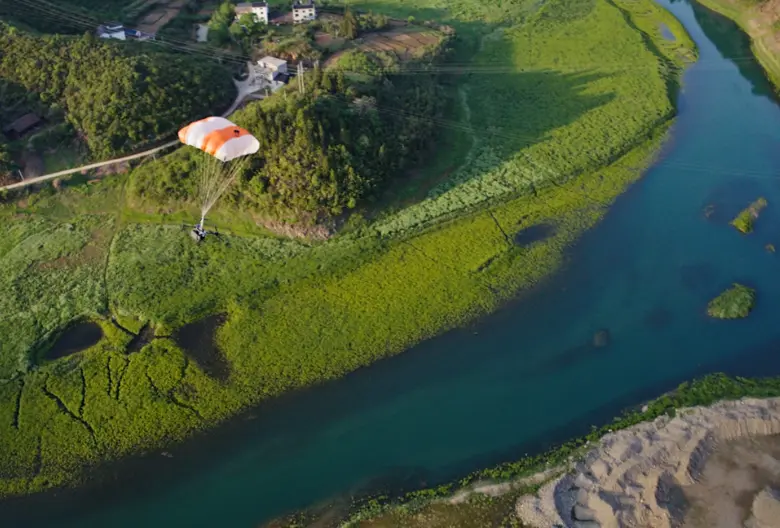
STANDARD PARACAID SYSTEM
The parachute is equipped with support functions, such as self-check at start-up, independent power supply, protection against propeller interruption before parachute deployment, and acoustic and visual alarms. It is capable of launching at low altitude and ensuring a stable landing, minimizing the risk of personal injury and material loss in extreme situations.
SAFE AND RELIABLE
The DJI FlyCart 30 offers advanced features for safe and reliable operation. Its intelligent obstacle avoidance system, with rotating phased array radar and binocular vision systems, enables it to detect and avoid multidirectional obstacles. The dual battery system provides guaranteed redundancy, ensuring operational continuity in the event of battery failure during flight. With multiple redundant designs, the FlyCart 30 is ready to face harsh environments, providing safety and efficiency in all missions.
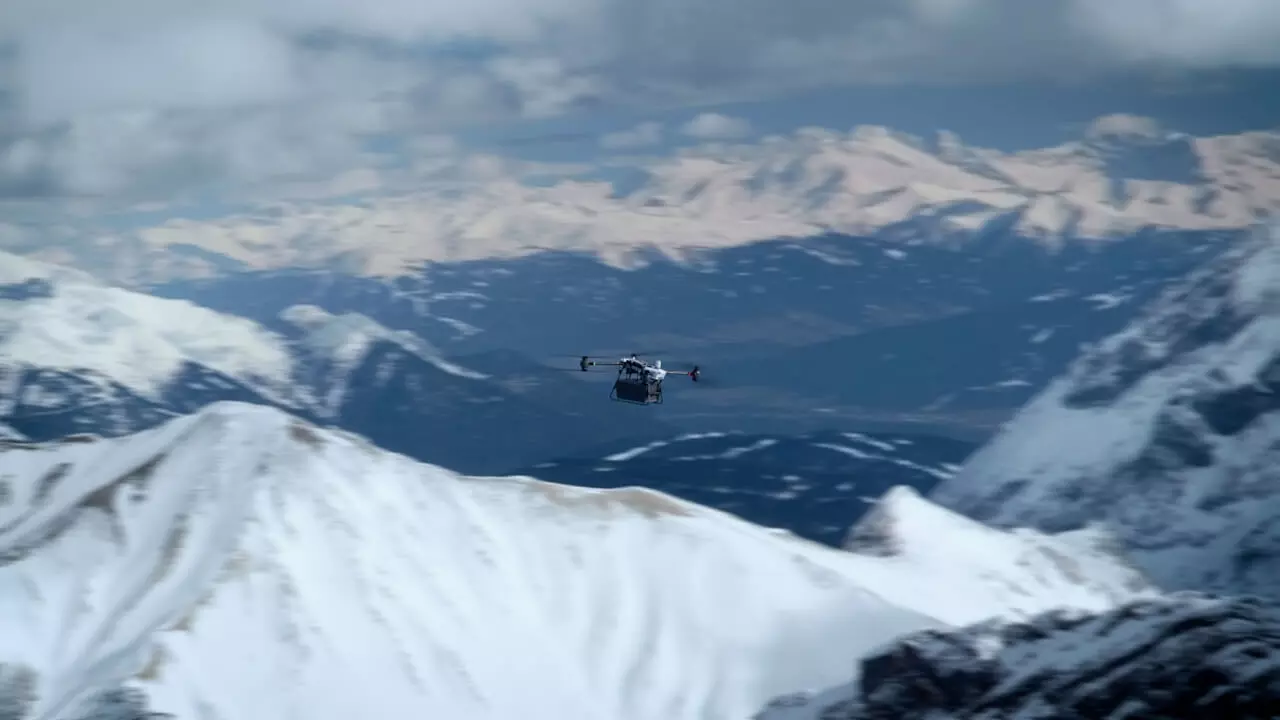
STRONG SIGNAL, STABLE IMAGE TRANSMISSION
The advanced DJI O3 transmission allows a distance of up to 20 kilometers, with four antennas that allow you to intelligently select the most suitable one to resist interference. Together with the DJI module, it works with 4G for stable transmission in complex environments. The DJI RC Plus, with its 7-inch screen and dual control, meets a wide variety of needs. Intelligent antenna selection improves signal stability. The internal and external batteries, used together, provide up to 6 hours of autonomy, with the external battery being hot-swappable and supporting continuous operation without compromising its useful life.

TWO LOADING MODES TO MEET ALL YOUR TRANSPORTATION NEEDS
The DJI FlyCart 30 offers flexibility with its two different charging modes: cargo box and empty crane system. This versatility allows it to adapt to a wide variety of transportation scenarios, providing a comprehensive solution.
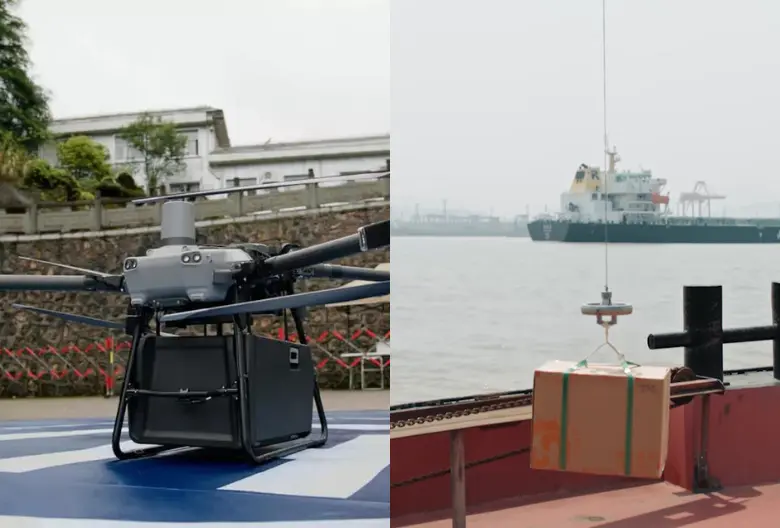
- Fast loading efficiency and stability in container transportation
- Complete support for vacuum lifting
The drone is factory-equipped with a universally sized EPP cargo box, designed to be easily opened, closed and disassembled, ensuring a smooth loading and unloading process. Weight and center of gravity sensing provides assistance to ensure proper loading, resulting in safe and stable flight.
- Maximum volume 70 liters
- Maximum transport weight 30 kg (double battery)
- Maximum transport weight 40 kg (single battery)
The aerial lift system has a rope descent mode and supports manual and automatic control methods. The payload is automatically released when it touches the ground, eliminating the need for manual retraction, ensuring accurate landing and safe operation. During flight, the drone adjusts its attitude to eliminate load oscillations, providing greater stability. In extreme situations, users can activate the cable fuse protection to ensure safety.
- Maximum transport weight 30 kg (double battery)
- Maximum transport weight 40 kg (single battery)
- Maximum retraction and recoil speed of 0,8 m/s
- Maximum release length of 20 m
APPLICATIONS
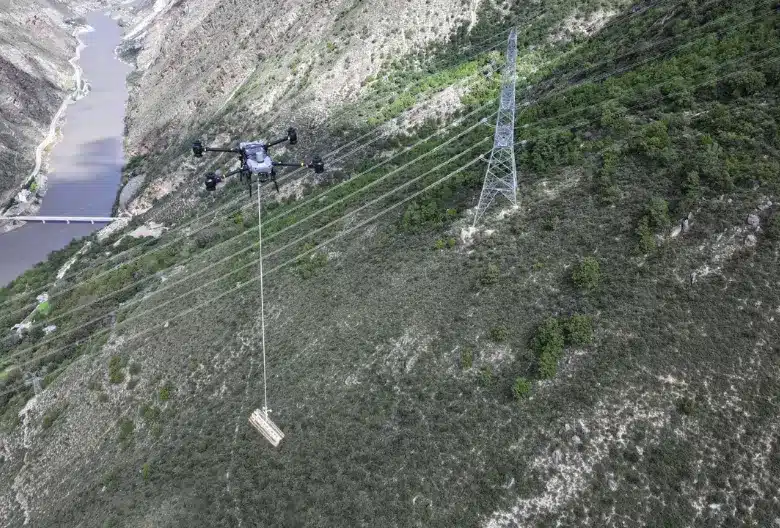
EMERGENCY TRANSPORT

TRANSPORT OF INFRASTRUCTURE MATERIALS
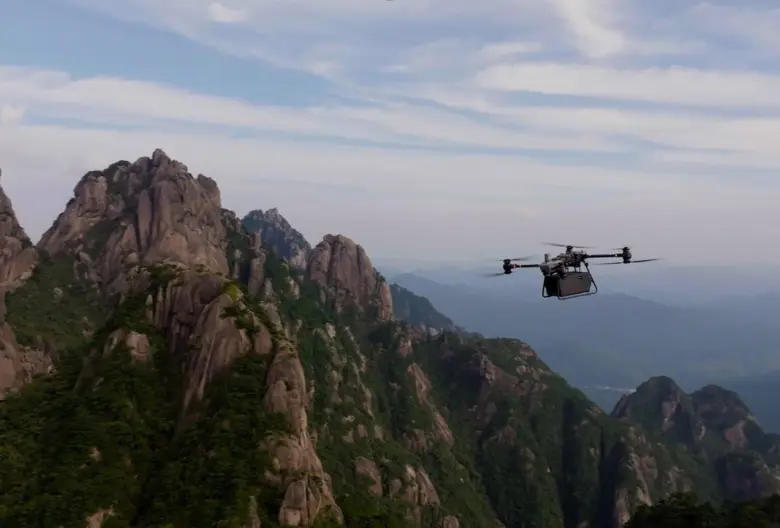
PARONAMIC MOUNTAIN TRANSPORT
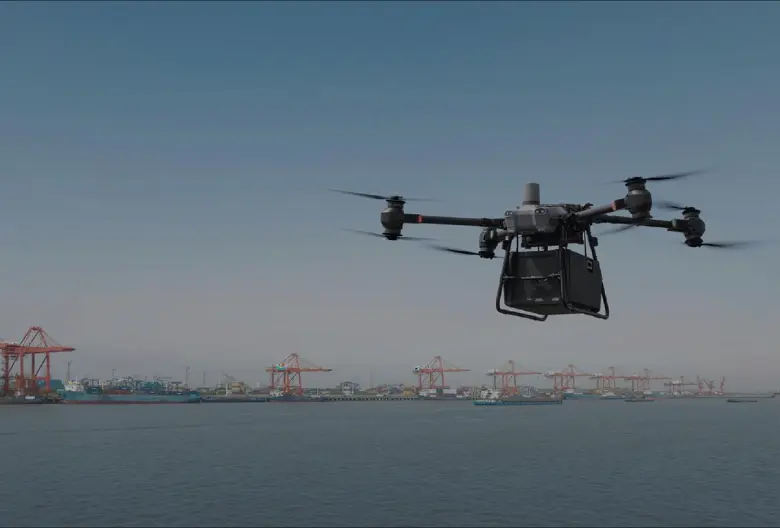
TRANSPORT
DE OFFSHORE
ACCESSORIES
Stay on mission longer with commercial accessories
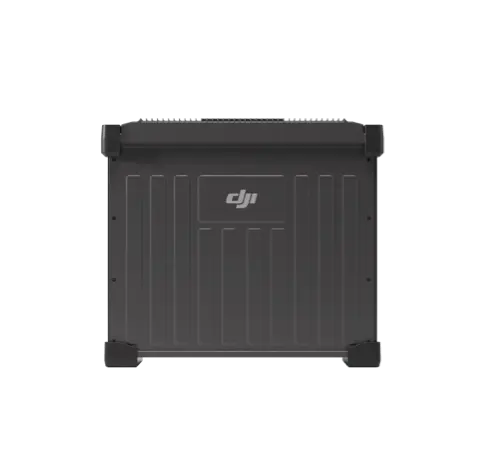
DJI DB2000 Smart Flight Battery
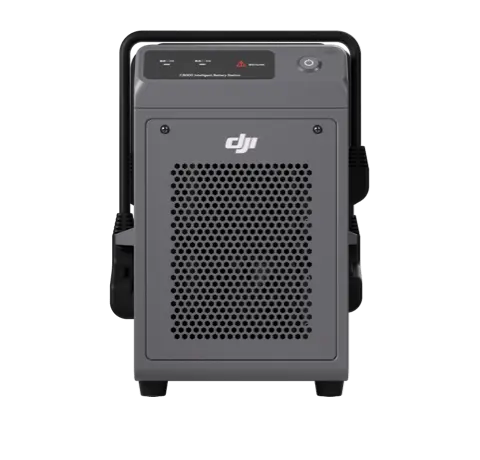
DJI C8000 Intelligent Charge Manager
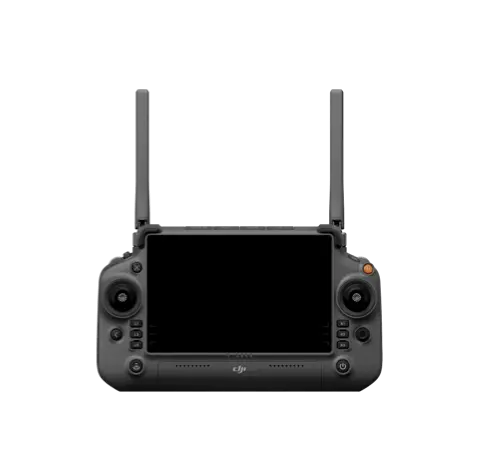
DJI RC Plus
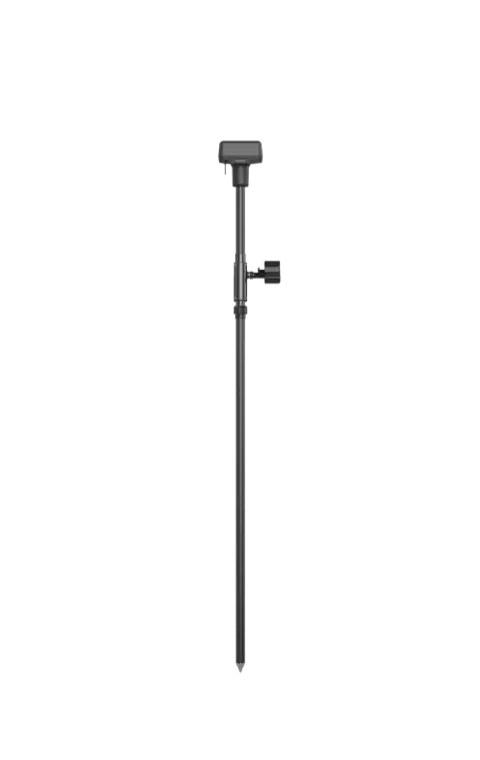
D-RTK 2 Mobile Station
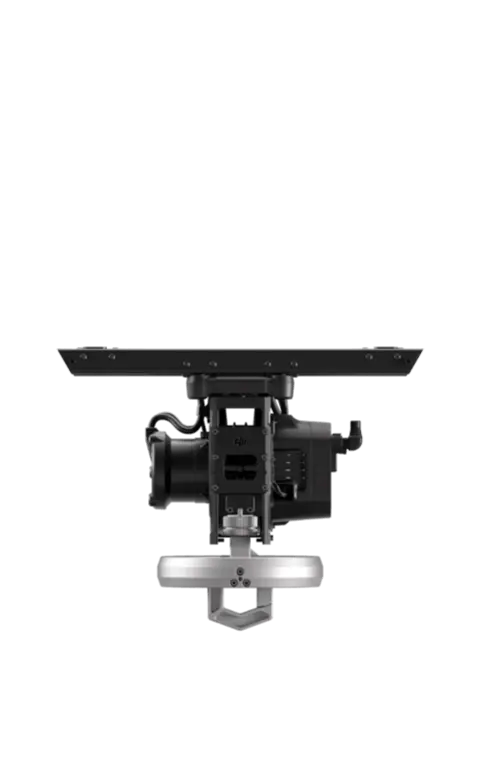
Overhead crane system kit
DJI FlyCart 30
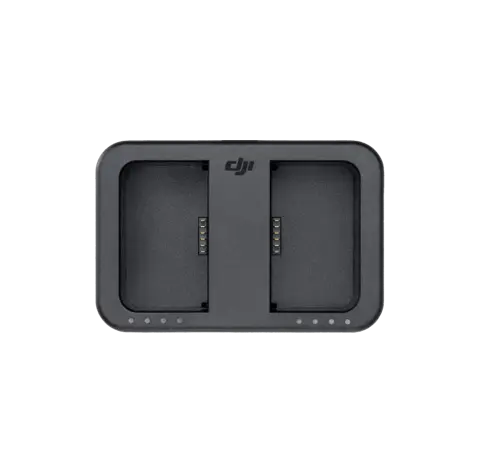
DJI Cellular Module

DJI Enhanced Image Transmission Module
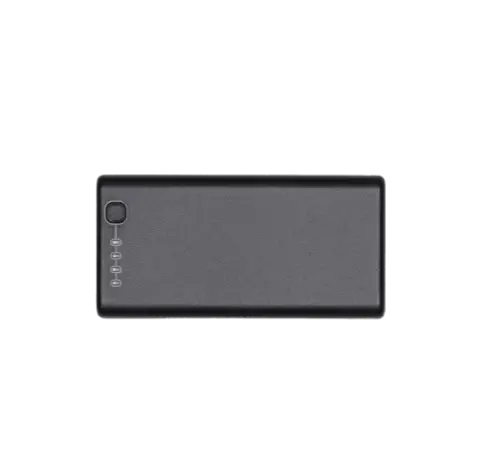
DJI WB37 Battery
FREQUENT QUESTIONS
IN THE BOX
In the box
1x Remote Control – RC Plus
1x Remote Control Strap
1x DJI 100W USB-C Power Adapter
1x Power Cable
1x USB-A to USB-C Cable
1x USB-A to USB-C Cable
DRONE AND PAYLOAD
FAQ Drone
What is DJI FlyCart 30?
DJI FlyCart 30 is DJI’s first unmanned aerial vehicle (UAV) dedicated to commercial transport. It balances flight capabilities, safety performance, stability and ease of use well. It features high payload capacity, long flight distance, high adaptability to the environment, stable video transmission signals, safe and reliable structural design, and a high level of automatic capability and intelligence in both hardware and software. It supports charging mode and winch mode and can adapt to various transport scenarios.
Along with DJI FlyCart 30, a new DJI DeliveryHub software platform is provided, enabling efficient cross-platform collaboration and centralized management in areas such as task planning, dynamic and real-time monitoring of operations, live-streaming, drone management and statistical analysis. This integrated software and hardware solution ensures more efficient, cost-effective and safer freight transport.
What is the level of protection? Can I fly in the rain?
DJI FlyCart 30 has an IP55 protection rating. The level of protection is not permanent and may decrease due to wear and tear caused by long-term use. The power system is not covered by this protection. It is recommended to idle on the ground for 1 minute after flying in the rain to avoid rust in the power system.
How is the flight performance?
The maximum flight speed on the route is 15 meters/second, the maximum flight speed in S gear is 20 meters/second, and the maximum flight altitude is 6,000 meters.
What are the characteristics of the power system?
The standard carbon fiber propellers are optimized for motor strength and heat dissipation to achieve stronger performance; the 4-axis and 8-propeller configuration supports short-term emergency flight after a single power unit fails, and is safer.
What functions does active phased array radar and binocular vision support?
Supports multi-directional obstacle avoidance in the horizontal direction; supports height detection from 0 meters to 200 meters.
Does it support ADS-B?
Support, built-in ADS-B signal receiver, timely warning of surrounding manned aircraft (ADS-B out installed and working normally, relative distance to DJI FlyCart 30 within 15 kilometers, no obstruction and no interference) information.
Can a remote controller be used to control the angle of the FPV camera?
Yes. A remote controller can be used to flexibly adjust the angle of the FPV camera.
Does DJI FlyCart 30 support arm locking detection?
Yes. DJI FlyCart 30 has a built-in arm-locking function. If the arms are not fully unfolded, a warning message will be displayed in DJI Pilot 2, and takeoff will be prohibited.
What payload configurations are supported?
Cargo mode, Winch mode, and third-party payload systems developed on DJI Payload SDK.
What functions does the winch system support?
The winch system has a descent mode and supports both manual control and automatic control. It has practical functions such as Swing Control and weighing and supports emergency Cut Cable Protection. Please contact after-sales service for repairs after using Cut Cable Protection.
Is it recommended to enable the Swing Control function on windy days?
No.
What is the payload capacity of DJI FlyCart30?
DJI FlyCart 30 has a payload capacity of up to 30 kg* in dual battery mode and a payload capacity of up to 40 kg* in single battery mode. In dual battery mode, the DJI FlyCart 30’s maximum flight distance without payload is 28 km**, while the DJI FlyCart 30’s maximum flight distance with a full 30 kg payload is 16 km***. Its higher payload capacity and longer flight distance mean lower transport costs and greater efficiency.
*Measured at sea level. Please note the difference between single and dual battery status. The maximum loaded weight should not exceed the recommended value. Avoid placing sharp objects when using the cargo boxes. Avoid goods hitting the landing gear when using the winch system. Otherwise, flight safety may be compromised.
**Measured with DJI FlyCart 30 (running on dual batteries) flying at a constant 15 m/s in a windless environment at sea level with no payloads until the displayed battery level reached 0%. The data is for reference only. Please pay attention to the Return to Home (RTH) indications in the DJI Pilot 2 app during your flights.
***Measured with DJI FlyCart 30 (running on dual batteries) flying at a constant 15 m/s in a windless environment at sea level with a full payload until the displayed battery level reached O%. Data is for reference only. Please note the Return to Home (RTH) indications in the DJI Pilot 2 app during your flights.
Battery charger
FAQ on batteries
Can DJI FlyCart 30 take off if the two intelligent flight batteries have different levels of power?
If the voltage or capacity difference between two intelligent flight batteries is too large, the app will display, “The voltage difference or capacity difference between the two batteries is too large, making it impossible to take off.” The parameters are as follows:
Voltage difference between two batteries: > 10 degrees: delta_V ≤ 2 V; < 10 degrees: delta_V ≤ 1 V
Capacity difference between two batteries: > 10 degrees: delta_soc ≤ 10%; < 10 degrees: delta_soc ≤ 8%
How long does it take to fully charge two intelligent flight batteries?
At normal temperatures, when two AC power cables are connected, it takes about 26.5 minutes to charge a single battery from 0% to 98%; it takes about 36.6 minutes to charge two batteries from 0% to 98%.
Why do intelligent flight batteries get hot when stored for a long time?
When intelligent flight batteries are stored for a long time, in order to ensure storage safety and extend battery life, the batteries will automatically turn on the “self-discharge at storage” function to discharge the battery with higher power to about 60%. Batteries may become slightly hot during discharge, which is normal.
Can intelligent flight batteries be used in low-temperature environments?
The working temperature of intelligent flight batteries ranges from -20° to 45° C. Using batteries in low-temperature environments will reduce battery life. Please arrange your flight time reasonably. To maximize battery performance, it is recommended to heat the battery temperature above 10° C before a flight.
If the temperature of a battery is below 20° C, the battery will first activate the charging and heating function and then enter the charging process after heating.
After an intelligent flight battery is installed on a drone and the power is turned on, if the battery temperature is low, the battery will automatically turn on the self-heating function to keep the battery temperature at about 10° to 12° C.
What is the battery life of an intelligent flight battery?
An intelligent flight battery has a lifespan of 12 months and 1500 cycles, whichever comes first.
Can intelligent flight batteries be carried on an airplane?
An intelligent flight battery has an energy of 1984.4 Wh, which cannot be carried on board according to airline requirements.
How many intelligent flight batteries can be charged by DJI C8000 intelligent charger at the same time?
Two intelligent flight batteries can be charged at the same time, with a maximum charging power of 2 x 3600 watts for dual batteries and a maximum charging power of 5700 watts for a single battery.
What kind of generator can be used with a DJI C8000 intelligent charger?
To connect to a third-party generator for fast charging, select a generator with a 220 V single-phase output and a nominal power of 8 kW or above.
Is DJI D12000iE generator supported?
It is not supported currently.
REMOTE CONTROL AND IMAGE TRANSMISSION
FAQ on remote control and transmission of images
How to charge a remote controller?
It is recommended to use a standard charger. A third-party charger must support the USB Power Delivery Specification and have a power of no less than 40 watts.
Does a DJI FlyCart 30 remote controller support 4G network interface cards?
It supports DJI’s customized 4G IoT card and user-purchased Nano-SIM cards.
Does it support 4G enhanced transmission?
Yes. The links of 4G enhanced transmission and DJI O3 transmission are converged, and the two can be switched seamlessly.
Are other DJI drones supported?
Other DJI drones are not supported currently.
Is Dual Operator mode supported?
Yes.
SOFTWARE
FAQ DJI DeliveryHub
What methods are supported to obtain real-time differential data?
DJI FlyCart 30 can use the following three ways to obtain real-time differential data:
1. Based on app settings, DJI FlyCart 30 is connected to a D-RTK 2 mobile station (RTCM3.2) to obtain real-time differential data.
2. A remote controller can connect to the network RTK service (RTCM3.2) through a 4G network interface card (free in the first two years in the Chinese Mainland, and payment is required in the third year).
3. A remote controller can connect to custom network RTK services based on the Ntrip protocol through a 4G network interface card or WiFi hotspot (RTCM3.0/RTCM3.1/RTCM3.2 are supported).
How to renew the network RTK service after it expires?
Enter the online RTK page through the RTK settings page, and click package renewal to scan the code for payment. After successful purchase, click Activate on the network RTK page to continue using the service.
How many DJI FlyCart 30 units does one D-RTK 2 mobile station support?
There is no limit.
How to upgrade the firmware?
1. Connect the drone to a computer and upgrade the firmware of the drone, remote controller, and D-RTK 2 mobile station through DJI Assistant 2 (Delivery Drones Series).
2. Use the DJI Pilot 2 app to upgrade the firmware of the drone, remote controller, and DJI DB2000 intelligent flight battery.
3. Go to the DJI official website to download the firmware, and then insert the SD card with the firmware package into the remote controller for an offline upgrade.
Please refer to the user manual for details.
Is SDK development supported?
Yes. For details, please contact dev@dji.com to obtain technical assistance.
What are the precautions before exporting logs?
Before exporting logs, check whether dual control has been enabled with 4G enhanced transmission. If 4G enhanced transmission is already enabled, disable 4G enhanced transmission for both remote controllers before exporting logs.
How to export logs?
It is recommended to pull logs from the Level I page and export logs using ‘custom logs’ after identifying a module issue.
Level I page:
· Flight issues: All logs except for video transmission logs
· Transmission issues: Only video transmission logs
Cloud platform
FAQ Cloud Platform
What drones are supported?
Drones supported: Currently, the DJI FlyCart 30 flight platform is supported.
How many simultaneous live streams are supported?
There is no limit to the number of live streams. The actual usage is limited by the downlink bandwidth of the playback network.
What screen is displayed on the livestreaming platform?
Currently, the image from the gimbal camera of the drone is displayed.
Is there any sound when livestreaming?
No.
Can livestreaming images be saved and downloaded?
The livestreaming recording function is not supported.
How long is the latency for live video streaming?
Latency depends on network conditions. If the network is in good condition, the latency is generally within one second.
Is livestreaming over GB28181 supported?
It is not supported currently. If you need to use the GB28181 protocol for livestreaming, you can push the stream directly through Pilot.
Where is the cloud server for DJI DeliveryHub deployed?
DJI DeliveryHub uploads, stores, and manages data on cloud servers operated by Amazon Web Services, which are compliant with ISO/IEC 27001 security certifications.
How to ensure users’ data security?
- Access links are protected by multiple layers of protection measures, including but not limited to WAF and one key for one device, to protect servers from attacks and prevent important information from being leaked.
2. Service hosting security: DJI DeliveryHub uses Amazon Web Services as a computing and storage service provider, which has passed ISO/IEC 27001 security certifications.
Which protocols are used for data transmission?
The HTTP, MQTT, and WebSocket protocols are supported. Each link is encrypted with TLS to ensure data security.
Will drone logs be recorded or synchronized? Is the function of viewing log records supported?
These are not supported currently.
Is a DJI DeliveryHub account different from a DJI account?
DJI DeliveryHub uses a unified DJI account. Therefore, there is no need to create or activate an additional account.
What operating systems are supported? Are there any requirements for browsers?
Web pages support Windows, Mac, Android, iOS, and other operating systems. It is recommended to use Chrome, Safari, Edge, and Firefox as the browsers.
Can I control drone movements or adjust the gimbal angle?
This is not supported currently.
Does DJI DeliveryHub support creating scheduled tasks?
No. Only immediate tasks are supported currently.
Does DJI DeliveryHub support automatic flight resumption?
No.
Does DJI DeliveryHub support 3D model import?
No.
Does DJI DeliveryHub support private deployment?
DJI DeliveryHub is a public cloud platform and does not support private deployment.
What route recording does DJI DeliveryHub support?
It supports the waypoint routes recorded by DJI FlyCart 30 and Matrice M30/M30T.
OTHERS
Other frequently questions
Introduction to DJI FlyCart 30 versions and usage areas
The DJI FlyCart 30 series has two versions: the Chinese Edition and Universal Edition. The Chinese Edition can only be used in the Chinese mainland, and the Universal Edition can be used in regions outside the Chinese mainland. Please consult your local after-sales center or agent for information on the regions where this product can be used.
SPECS
Access to technical specifications
Max Payload
Weight |
42.5 kg (without battery)
65 kg (with two DB2000 batteries)
|
Max Takeoff Weight |
95 kg (with cargo at sea level)
|
Max Diagonal Wheelbase |
2200 mm
|
Dimensions |
1590 x 1900 x 947 mm (LxWxH) (arms unfolded, propellers folded) |
Dimensions |
2800x3085x947 mm (LxWxH) (arms & propellers unfolded) |
Dimensions |
1115x760x1027 mm (LxWxH) (arms & propellers folded) |
Folding Method
|
Towards body
|
Loadable Battery Quantity
|
2
|
Hovering Endurance (empty weight, with max battery capacity |
29 mins (dual battery mode) |
Hovering Endurance (max weight, with max battery capacity) |
18 mins (30 kg weight load, dual battery mode) 8 mins (40 kg weight load, single battery mode) *The data was collected in controlled conditions: zero altitude and a windless environment. For reference only. |
Max Flight Distance (empty weight, with max battery capacity)
|
28 km (dual battery mode) 12 km (single battery mode) The data was collected in controlled conditions: zero altitude and windless environment, at a constant speed of 15m/s. For reference only. |
Max Flight Distance (max weight, with max battery capacity)
|
16 km (30 kg weight load, dual battery mode) 8 km (40 kg weight load, single battery mode) The data was collected in controlled conditions: zero altitude and windless environment, at a constant speed of 15 m/s. For reference only. |
Max Flight Time (max weight, with max battery capacity)
|
18 mins (30 kg weight load, dual battery mode) 9 mins (40 kg weight load, single battery mode) The data was collected in controlled conditions: zero altitude and a windless environment, at a constant speed of 15 m/s. For reference only. |
Operating Temperature
|
-20ºC a 45ºC |
Ingress Protection Rating
|
IP55
|
| Hovering Accuracy (with strong GNSS signal) |
RTK positioning enabled: RTK positioning disabled: ±60 cm horizontal and ±30 cm vertical (radar enabled: ±10 cm) |
RTK/GNSS Operating Frequency |
RTK: GPS L1/L2, Galileo F1/F2, BeiDou B1I/B2I/B3I, Galieo E1/E5b, QZSS L1/L2 GNSS: GPS L1, BeiDou B1I, Galileo F1, Galieo E1, QZSS L1 |
Max Pitch Angle |
30º |
Max Ascent Speed |
5 m/s (The data was collected in controlled conditions: zero altitude and a windless environment, with a 30 kg payload. For reference only) |
Max Descent Speed |
3 m/s (vertical) 5 m/s (tilted) The data was collected in controlled conditions: zero altitude and a windless environment, with a 30 kg payload. For reference only. |
|
20 m/s (The data was collected in controlled conditions: zero altitude and a windless environment, with a 30 kg payload, for reference only). |
Max Flight Altitude
|
6000 m (without payload) |
Max Wind Speed Resistance |
12 m/s (*The data was collected in controlled conditions: zero altitude and a windless environment, with a 30 kg payload. For reference only). |
SYSTEM
Stator Size |
Diámetro 100 mm, altura 33 mm |
Motor KV Value |
48 rpm/V |
Max Motor Power |
4000W/rotor |
Propellers Material |
Carbon fiber composite |
Propellers Diameter |
54 pulgadas |
Propellers Type |
Foldable double-blade propellers |
Main-rotor Diameter |
1375 mm |
Rotor Quantity |
8 |
LED LIGHT
Effective Illumination Distance
|
10 metros
|
Illumination Mode
|
60 Hz, automatically switch on according to ambient light
|
DJI O3 IMAGE TRANSMISSION
Model
|
Pigeon (con DDR) -2T4R
|
Signal Effective Distance
|
20 kilómetros (FCC) 8 kilómetros (CE/SRRC/MIC) no interference or obstructions |
O3 Operating Frequency
|
2,4000 GHz a 2,4835 GHz 5,725 GHz a 5,850 GHz Some countries or regions do not support the 5.8 GHz frequency band. Please refer to local flight laws and regulations for details. |
EIRP |
2,400 GHz a 2,4835 GHz: 5,725 GHz a 5,850 GHz: |
4G convergence function |
Support, DJI enhanced image transmission module |
Key model 4G |
DJI Enhanced Image Transmission Module |
4G function |
Supports hot swapping |
4G function |
Drone remote control support |
Data Security |
AES-256 |
| ADS-B | Supported |
FORWARD AND BACKWARD ACTIVE PHASED ARRAY RADAR
Model |
RD241608RF (forward) RD241608RB (backward) |
Altitude Detection |
Fixed altitude range: 1.5-200 m |
Rear Obstacle Avoidance |
Sensible distance (rear): 1.5-50 m FOV Forward: 360° horizontal, ±45° vertical,±45°upward Backward: ±45° horizontal, 360° vertical Operating conditions: Available during takeoff, landing, and ascending when an obstacle is more than 1.5 m away from the aircraft Safe distance: 3.5 m (distance between the propeller tip and obstacle when the aircraft is hovering after braking) Sensing direction: multi-direction |
BINOCULAR VISION SYSTEM
FOV |
Horizontal: 90; Vertical: 106° |
Work Environment Requirements |
Normal lighting with clearly textured surfaces |
FPV
Model |
1920×1440 |
DFOV |
149º |
Frame Rate |
30 fps |
Type |
Full HD FPV Single Axis Gimbal Camera |
Fill Light |
Supported |
CARGO CASE
Dimension |
754 mm length, 472 mm width, 385 mm height |
Inner Space |
573 mm length, 416 mm width, 306 mm height |
Material |
EPP plus aluminum alloy frame |
Weighing Feature |
Supported |
Weight |
Approx. 3 kg |
Load Capacity |
0 – 40 kg |
PARACHUTE
Max Payload
|
≤95kg |
Dimension |
300 mm length, 200 mm width, 120 mm height |
Weight |
Approx. 2.1 kg |
Automatic Reaction Time |
~1000 ms |
Descending Speed |
No more than 6 metres/second (full load condition with no wind at sea level, for reference only). |
Parachute Shape |
Square |
Material |
nylon |
Surface Area |
Approx. 22 ㎡ |
Mnimum Opening Height |
60 m |
Operating Temperature |
-20ºC a 45ºC |
Ingress Protection Rating |
IP55 |
Mainboard Power-off Battery Life |
≥1 hour |
Memory Card Capacity |
Real-time record for 10 flights |
Buzzar Alarm |
Supported |
Lighting Alarm |
Supported |
Manually Opening |
Supported |
Automatic Opening |
Supported |
WINCH SYSTEM (OPTIONAL)
Model |
A2EWI-30A |
Dimension |
252 mm length, 195 mm width, 193 mm height |
Body Weight |
2.5 kg (without clump and couple) |
Clump Weight |
1,9 kg |
Couple Weight |
0,6 kg |
Touchdown Release Feature |
Supported |
Payload Capacity |
Dual battery: 5 to 30 kg Single battery: 5 to 40 kg |
Cable Length |
20 m |
Max Retraction Speed |
0,8 m/s |
Operating Temperature |
-20°C a 45°C |
Ingress Protection Rating |
IP55 |
Weighing Function |
Supported |
Cut Cable Protection |
Supported |
Swing Control Feature |
Supported |
Manual Operation |
Supported |
Automatic Operation |
Supported |
Deceleration Protection |
Supported |
DJI DB2000 ITELLIGENT BATTERY
Model |
DB2000 |
Capacity |
38000mAh |
Nominal Voltage |
52,22 V |
Type |
14S1P |
Energy |
1984,4 Wh |
Weight |
Approx. 11,3 kg |
Installation Method |
Plug |
Dimension |
316 mm length, 152 mm width, 279 mm height |
Operating Temperature |
-20°C a 45°C |
Charging Rate |
5 a 15°C: 1,0C 15 a 45°C: 2,5C |
Max Charging Power |
5700 W |
Automatic Heating Feature |
Supported (when the battery temperature is below 10° C, pressing and holding the button or turning on the drone will activate the self-heating function. When the battery temperature is below 20° C, connecting the charger to the battery will activate the self-heating function. Charging and discharging in a low-temperature environment may reduce the battery’s lifespan).
|
DJI C8000 INTELLIGENT CHARGER
Model |
CHX101-7000 |
Input |
90 a 264 VCA
|
El voltaje de salida |
42-59.92 V DC |
Potencia máxima de salida |
42 a 59,92 Vcc |
Max Output Powera |
7200 W (Dual input) 3600 W (Single input) |
Output Channel Quantity |
2 |
Operating Temperature |
-20 ℃ a 45 ℃ |
Charging Security |
Connector protection feature available
|
CONTROL REMOTO
Model |
DJI RC PLUS |
App |
DJI Pilot 2 |
Operating Frequency |
2.400 GHz a 2.483 GHz 5.725 GHz a 5.850 GHz |
EIRP |
2,4000 GHz a 2,4835 GHz: <33 dBm (FCC), <20 dBm (CE/SRRC/MIC) 5,725 GHz a 5,850 GHz: <33 dBm (FCC), <14 dBm (CE), <23 dBm (SRRC) |
Operating Temperature |
-20ºC a 45ºC |
Charging Environment Temperature |
5ºC a 40ºC |
Built-in Battery Life |
3.3 hours (at normal temperature, dual-channel image transmission and frequency output) Indoor environment 25 °C, power consumption 100 % to 0 %. Data is for reference only, please refer to actual usage. |
External Battery |
2.7 hours (at normal temperature, dual-channel image transmission and frequency output) Indoor environment 25 °C, power consumption 100 % to 0 %. Data is for reference only, please refer to actual usage. |
Charging Method |
Use a USB-C fast charging charger with a maximum power of no less than 65 W (maximum voltage of 20 V). A DJI portable charger is recommended. |
Charging Time |
2 hours with built-in battery, 2.5 hours with built-in and external battery (shutdown status according to official charging method) |
Ingress Protection Rating |
IP54 |
Video Output Interface |
HDMI |
Wi-Fi Protocol |
Wifi 6 |
Wi-Fi Working Frequency |
2,4000 GHz a 2,4835 GHz 5,150 GHz a 5,250 GHz 5,725 GHz a 5,850 GHz |
| Bluetooth Protocol | bluetooth 5.1 |
Bluetooth Working Frequency |
2,4000 GHz a 2,4835 GHz |
EIRP |
<10dBm |
GNSS |
GPS + Galileo + BeiDou |
4G dongle support |
Supported |
Dual Operator Mode |
Supported |
ANNOTATION
The words HDMI, HDMI High-Definition Multimedia Interface, the HDMI trade dress and the HDMI logo are trademarks or registered trademarks of HDMI Licensing Administrator, Inc.
![]()



